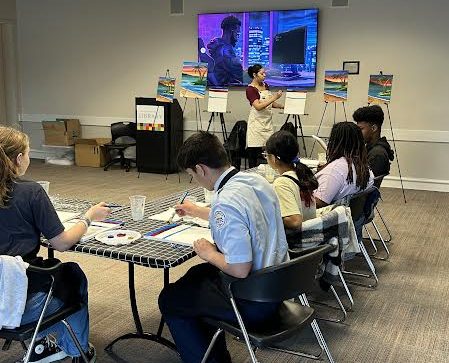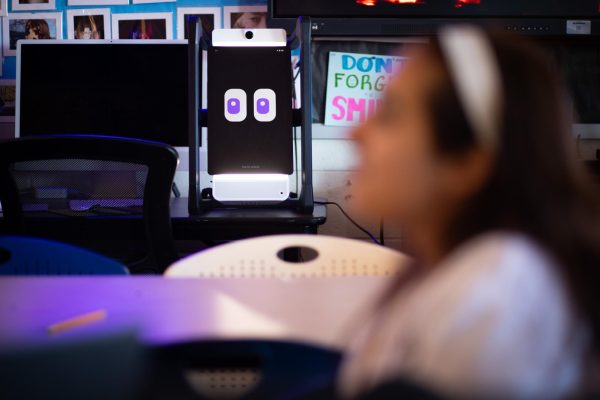New meal options coming to school lunches
Photo by Lucia Wallace
CMS is reworking the way the school system creates and produces menus.
It’s no secret that students are often underwhelmed when it comes to cafeteria food. It’s common opinion that, besides the cheese sticks, menu choices are bland. But there may be a silver lining to more than that tinfoil wrapped baked potato: According to new Charlotte Mecklenburg Schools Manager of Culinary Development, Jody Francisco, CMS is reworking the way the school system creates and produces menus.
“I want the kids to be excited about it,” Francisco said.
Francisco, a former chef, has been working with other administration officials in CMS to come up with new programs involving school food. One of these new ideas is a “second chance breakfast.” Because many students arrive to school so early, they are often not ready to eat breakfast and so instead don’t eat anything. A “second chance breakfast” would place breakfast hours in between first and second blocks, when hopefully students would feel more ready to eat. The breakfast may include food carts around the school, making breakfast a more portable and in turn more accessible resource. In addition, for lunches, Francisco is looking to implement a salad bar.
“We’re going to have to look at what’s the right equipment, how do we do it, where do we put it…there’s a lot of logistics,” Francisco said. “But it’s very possible.”
Francisco hopes to run pilot salad bars as soon as this spring. Potentially, if this were a success, he would like to add wing bars and smoothie stations as well.
Francisco also wants to implement innovative menu items not necessarily created by himself. He hopes for the development of recipes to be a process added to the Career and Technical Education (CTE) curriculum, meaning culinary students would have the opportunity to invent recipes for their schools and the school system.
“I could certainly sit here and create 20 or 50 menu items, but to me we would be missing a huge opportunity to pair with culinary students,” Francisco said. “[By working with the students] we would gain valuable insight.”
Senior culinary student William Aguilar agrees. Aguilar hopes to have the opportunity to create his own menus in college and thinks that having the opportunity in high school would provide valuable experience.
“It’s a great idea,” Aguilar said. “It’ll help the school be more creative and [provide] better food.”
Culinary teacher Dale Richardson thinks the program is absolutely doable at East Meck and would make a nice addition to their curriculum.
“Not only culinary students, but Foods II would get involved,” Richardson said. “It would also give the students of East an input in what they eat, rather than just being given something that they don’t always like.”
The new program would allow for all culinary students to come up with menu items and then, in order to decide on which menu items would be served in schools, CMS would hold a county-wide competition involving all participating programs. Francisco is even working with the CMS Communications Department in hopes of creating a documentary about the entire process.
Student involvement wouldn’t stop at the culinary department; Francisco wants to include school gardens as part of the initiative as well.
“I did a survey. Well over 100 of the 176 schools in CMS have raised beds, whether that’s flowers, vegetables, whatever. My thought process is, if we use culinary students to create recipes for, like, ranch dressing, we could use [the gardens] to grow those ingredients specifically,” Francisco said.
Obviously East Meck’s garden wouldn’t be able to feed all of East Meck, but with this idea, certain ingredients would be grown consistently in every CMS garden in order to produce enough for the recipe, not necessarily fruits and vegetables, but most certainly herbs and spices. From this, the ingredients and recipe could be sent off, by CMS, to be patented, creating a CMS brand of food, like that of Food Lion or Harris Teeter.
By doing this, Francisco is hoping to implement the idea of farm-to-table, increasing the amount of locally grown ingredients in CMS food.
In all, Francisco is hoping to create a more nutritious and enjoyable experience for students when it comes to school meals.
“I think it’s important to know that I’m not just working to help improve school menus but also working to create a whole new student experience and change the perceptions of the students centered around food,” Francisco said.
Your donation will support the student journalists of East Mecklenburg High School. Your contribution will allow us to purchase equipment and cover our annual website hosting costs.






